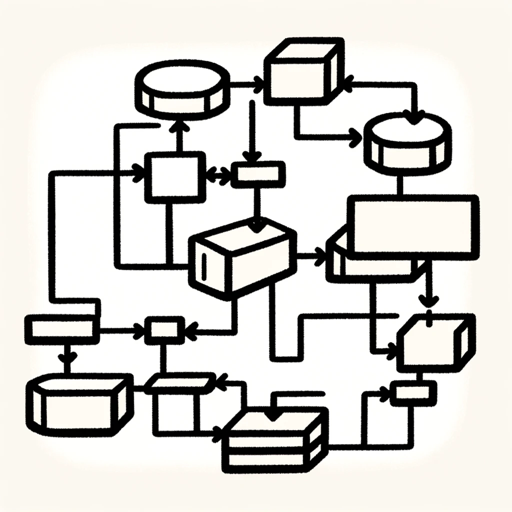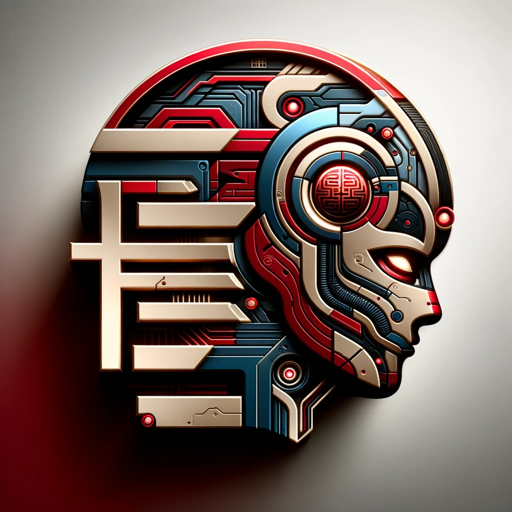SQL Database Architect-AI-powered database architect
AI-powered SQL Database Design Tool
Related Tools
Load More
Database Designer
This GPT can provide guidance on database schema design, SQL queries, data normalization, database optimization, and handling various database management systems (DBMS) like MySQL, PostgreSQL, and MongoDB.
Database Architect (+Database Visualization)
Database Expert GPT: Design Databases + 🔴VISUALIZE IN-CHAT🔴+ Optimize queries, Create Normalized Database structures and more. For: SQL, Oracle, Salesforce, GA4

Data Warehouse Architect
Architect that specializes in data warehouse design and modeling, as well as the modern data stack (including Snowflake and dbt), ELT data engineering pipelines

Data Engineer Consultant
Guides in data engineering tasks with a focus on practical solutions.

DBT Architect
Professional dbt expert for precise guidance.

SQL to ERD
Simply put SQL query code, get ER diagram.
20.0 / 5 (200 votes)
Introduction to SQL Database Architect
SQL Database Architect is a specialized tool designed to help users design, optimize, and implement relational databases. It is tailored for creating high-quality, efficient database structures that are compatible with specific SQL technologies, such as Microsoft SQL Server and various ORMs (Object-Relational Mappers) like Entity Framework. The tool emphasizes clear, human-readable table and column names, making relationships explicit and favoring higher forms of normalization without over-complicating the design. An example scenario might be designing a database for an e-commerce application, where the architect ensures the database is normalized to avoid data redundancy and anomalies, thus improving performance and scalability.

Main Functions of SQL Database Architect
Database Structure Design
Example
Creating an ER (Entity-Relationship) diagram for a new HR management system.
Scenario
A company needs to manage employee information, including departments, roles, and salaries. The architect designs a normalized database structure, ensuring each entity (Employee, Department, Role) is represented by a table with appropriate relationships and constraints.
Compatibility Optimization
Example
Ensuring a database design works seamlessly with Microsoft SQL Server and Entity Framework.
Scenario
A development team is using Entity Framework for their ASP.NET application. The architect provides a database design that includes precise data types, relationships, and constraints that align perfectly with Entity Framework's requirements, facilitating smoother development and fewer runtime issues.
Normalization and Performance Tuning
Example
Optimizing an existing database for a large-scale inventory management system.
Scenario
An existing database suffers from performance issues due to redundant data and anomalies. The architect reviews the current structure, identifies inefficiencies, and redesigns the database to eliminate redundancy, enforce data integrity, and improve query performance.
Ideal Users of SQL Database Architect Services
Database Administrators
DBAs who are responsible for designing, implementing, and maintaining database systems. They benefit from the tool's ability to create optimized and scalable database designs that ensure data integrity and performance.
Software Developers
Developers who need to integrate databases with their applications, especially those using specific ORMs like Entity Framework. They benefit from having a well-structured database design that is compatible with their development tools and frameworks, reducing development time and minimizing errors.

Guidelines for Using SQL Database Architect
Visit aichatonline.org for a free trial without login, also no need for ChatGPT Plus.
Start by navigating to the website to access the tool immediately without any sign-up process.
Define your project requirements clearly.
Outline the key functionalities and data needs of your project to ensure a precise and effective database design.
Input your requirements into the tool.
Use the user-friendly interface to enter details about the entities, attributes, and relationships required for your database.
Review the generated ER diagram.
Examine the proposed entity-relationship diagram to ensure it aligns with your project's specifications and make any necessary adjustments.
Export and implement the database design.
Once satisfied, export the design in a format compatible with your SQL server or ORM and proceed with implementation.
Try other advanced and practical GPTs
DataBase
AI-driven solutions for database mastery.

Database Designer
AI-powered database design for everyone

SEO
Enhance Your Site with AI-Powered SEO

SEO
AI-powered SEO for Better Rankings

中文GPT4.0
AI-powered Chinese language assistance

中医
Balance your health with AI-powered TCM.

Cigars Database
Your AI-powered guide to cigars

Database Management Systems
AI-powered database management tool.

Chrome Extension Engineer
AI-powered Chrome Extension Development

API GPT
AI-powered API creation and design

Ultimate X (Twitter) Content Creator
AI-powered tool for impactful Twitter content.

X (Twitter) Bio Writer
AI-Powered Twitter Bio Generator

- Academic Research
- E-commerce
- Web Development
- Data Analytics
- Enterprise Planning
Q&A About SQL Database Architect
What types of projects can SQL Database Architect assist with?
SQL Database Architect can help with a wide range of projects, including web applications, data analytics, e-commerce platforms, and enterprise resource planning systems.
How does SQL Database Architect ensure compatibility with different SQL servers?
The tool allows users to specify their SQL server and ORM preferences, ensuring the generated database design is compatible with their chosen technology.
Can SQL Database Architect handle complex database designs?
Yes, SQL Database Architect is capable of designing both simple and complex databases, supporting higher forms of normalization and intricate relationships between entities.
Is SQL Database Architect suitable for academic use?
Absolutely. It is ideal for academic projects, providing a clear and structured approach to database design, which is beneficial for research and educational purposes.
What are the benefits of using SQL Database Architect over manual design?
Using SQL Database Architect saves time, reduces errors, and ensures best practices in database design, leading to more efficient and reliable databases.